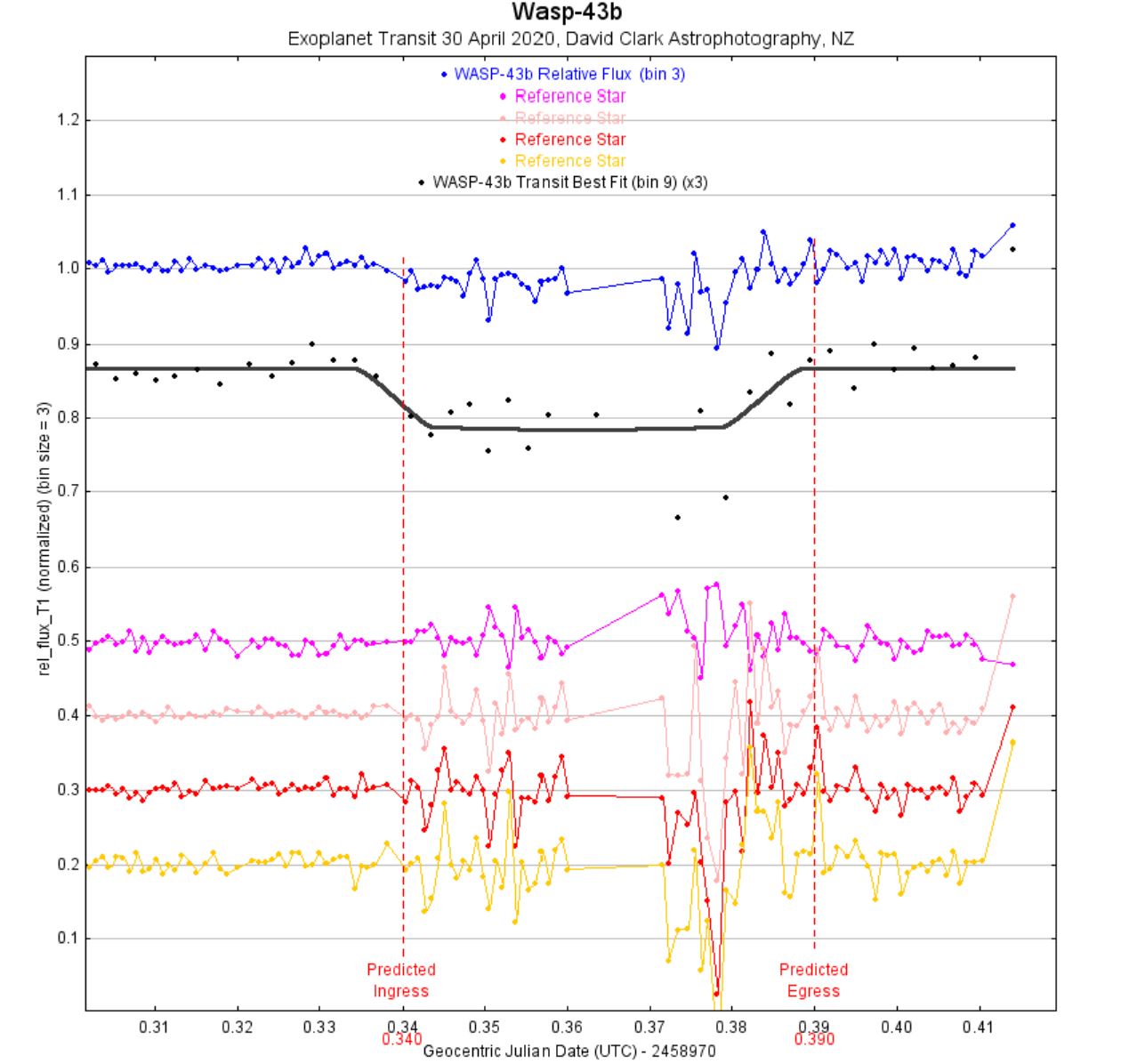 |
Wasp43-b Exoplanet Transit
April 30 2020 9 years ago, the existence of a planet orbiting the star WASP-43 was published in the "Astronomy and Astrophysics" journal. This discovery was the result of observations by the SuperWASP program and the La Silla Observatory in the Chilean mountains. This planet is about the same diameter as Jupiter, and orbits closely around its sun, completing a revolution every 19 hours. The planet's orbital path sometimes takes it in front of its star from where we on Earth view it, causing the magnitude 12.4 star to dim by about 2% as the planet transits across the face of the star, blocking some of the light. I observed the expected transit of star WASP-43 on 30 April 2020 with my 5 inch refractor from suburban Auckland, New Zealand. This observation required 'differential photometry', in which multiple images of the star are taken and compared to reference stars to try to detect a small dimming of the target star. I took 417 images of 17 seconds each. Sky conditions were initially good, but deteriorated throughout the 3 hour period, with high clouds disturbing the measurements. Of the 417 images, 9 were later discarded due to excessive clouds passing overhead. The remaining images were calibrated and registered in PixInsight, and then photometrically measured in AstroImageJ. A best-fit transit graph was created from the data (the black curve on the graph at 3 times vertical scale). The expected 0.025 magnitude dimming of the WASP-43 star was clearly observed. Yay! Isn't it amazing that we amateurs can detect an extra-solar planet (an exoplanet) around another star? |